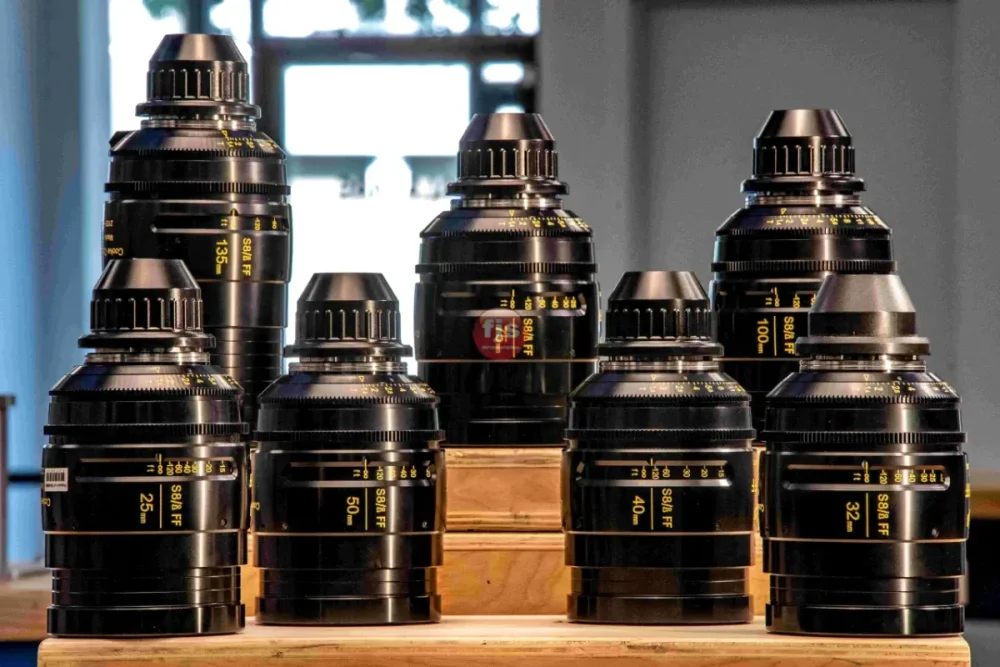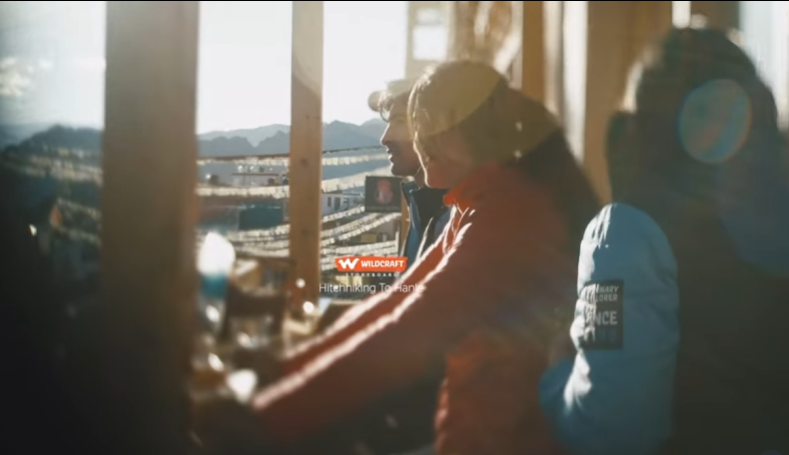All Activity
- Today
-
Used Cooke S8/i lens set of 7: 25, 32, 40, 50, 75, 100, 135mm for Sale Price: USD $145,000 FOB https://fjsinternational.com/cameras/cooke-s8-i-set-of-7/ Please check our website for our phone number and email address, call, text or email. FROM FJS INTERNATIONAL AVAILABLE FOR PICKUP IN ANY OF OUR OFFICES IN LOS ANGELES, NEW YORK, FLORIDA, LATIN AMERICA, EUROPE, HONG KONG
-

Underexposed Face - Eye light
David Mullen ASC replied to Boris Kalaidjiev's topic in Lighting for Film & Video
People tend to look down so the light under the lens shows up better, plus I'm also using it to reduce bags under the eyes. The only downside is that is also adds light under the chin. Also I've found that people with deep-set eyes catch a lower eyelight better because their brow shadows a light over the lens unless it is a longer-lensed close-up. On a wider-angle lens closer to the face, the top of the mattebox can be too high relative to the face and the center of the lens. Plus the focus-measuring horns of the Preston/Lightranger are often up there. -

new ALCS compact crystal motor for Eclair NPR
Aapo Lettinen replied to Aapo Lettinen's topic in Eclair
finessing the vibration reduction mount design now. all the other inner mechanics are ready and the prototype is using the final electric motor type now. just fine tuning the design of that grey rubber-like polyurethane ring which reduces motor noise to get the shape optimal. This assembly can already turn the camera and now when I have the outer shape and dimensions of that grey shockmount ring it is possible to continue designing the outer covers of the motor and the final circuit boards which go underneath the shockmount assembly. -
alexandre favre started following Arri SR3 Camera Package
-
Arriflex SR3 Package – GeckoCam Upgrade to 150fps ARRI SR3 Camera Body, Super 16, Serial No. 1514 GeckoCam High-Speed Upgrade (150fps) PL Mount IVS Video Assist (HD upgrade with elbow available at extra cost 1000 €) Super 16 Groundglass, 1.66 (2) SRIII 400ft Magazines standard (Additional magazine available at extra cost) ARRI SR3 Eyepiece with Eyecup (heated version available at extra cost 500€) Onboard Battery Adapter 1x Onboard Battery (needs re-celling) No Charger Camera is located in Zurich. Price 15'000€ + shipping
-
Underexposed Face - Eye light
Domen Martincic replied to Boris Kalaidjiev's topic in Lighting for Film & Video
Thank you for a nice example! If I may ask, what is the reason you put the Litemat under the lens and not over the lens? -
I am looking for a 416 package: Preferably with Indieassist HD tap 3-4xmags Both short and long VF Preferably white radio. Not a must. VMount plate is a bonus Various ground glasses are a bonus Ultra 16 Minimum 8 lenses but but preferably 9
-
μεταμορφώσεις
Jeff Bernstein replied to Jeff Bernstein's topic in Students, New Filmmakers, Film Schools and Programs
ELABORATE TRIPLE SCREEN KISS : Force of Evil (1948) -
Best modern lenses for Super 16mm
Gautam Valluri replied to Mohammed Tahir's topic in Lenses & Lens Accessories
As far as I know, the 416 was designed to be able to take 35mm lenses. -
Luis Hartmann started following 250D underexposure problem
-
Thank you for giving an update!
-

Best modern lenses for Super 16mm
Luis Hartmann replied to Mohammed Tahir's topic in Lenses & Lens Accessories
Yeah, in my circles it's quite common for people to use the Ultra Primes with the 416. Good results. -
Vivek Venkatraman started following How can I replicate this kind of sun flare
-
I was wondering what kind of lenses causes these type of flares. In particular in talking about the flare in the lower half of the image. Where the rays of the sun dip a bit lower and have this kind of chromatic fringing going on. The second image [with the girl in the red sweater] from the same creator also shows certain Petzval like characteristics. Is it possible that its a Helios?
-
Another factor to consider: the blue layer is the most grainy one of the three, but also contributes least to the image; in a tungsten film, the blue layer needs to be more sensitive because the tungsten light sources are less potent in blue energy. This makes that a daylight film (250D) is less grainy than a similar tungsten type (200T) when blue sky etc are involved. This said, (reasonable) grain is no longer considered as a defect but as a feature. We worked for a famous british director, first name Ken, who shoots on S16 because it matches his storytelling very well, if you have seen his films you will understand.
-
There are lots of normal C mounts that will work fine with a non-reflex Bolex or other C mount cameras. Often buying a camera with lenses included is much cheaper than trying to source lenses individually. The price of C mounts has certainly become ridiculous, but occasionally you can get a bargain - typically if it's an auction rather than a buy it now price. Kern made a range of normal C mounts for non-reflex Bolexes and other C mount cameras, which are good quality. Switars were the premium range, Yvars were a bit simpler and cheaper. Look for ones that have AR written on them rather than RX or Macro-Switar. Schneider also made good C mounts, as did Taylor Hobson (Cooke), Angenieux, Elgeet, Kinoptik, Kodak and others. Som Berthiot made lower cost lenses, but some were still quite good. Really vintage, pre-war lenses by the likes of Taylor Hobson or Hugo Meyer or Goertz or Dallmeyer or Ross etc can be OK but older lenses can be lower contrast and deteriorated by time. Japan made lots of excellent cine C mounts from the late 50s on - Canon, Nikon, Kowa, Soligor etc, and then quite a few TV or CCTV lenses by Canon, Fujinon, Kowa, Computar, Cosmicar etc, which were generally made to lower specs than Cine. Some TV lenses are fine, some are pretty crappy but they tend to be cheaper. You can also adapt to many other lens mounts using adapters. This guy did a comparison of a bunch of C mounts: https://toby-marshall.com/galleries/bokeh-tales/a-comparison-of-the-bokeh-and-rendering-of-17-25mm-c-mount-16mm-cine-lenses/
-
Best modern lenses for Super 16mm
Sam Risley replied to Mohammed Tahir's topic in Lenses & Lens Accessories
Luis and Tyler, have you guys ever used the super 35 Ultra Primes on a 16mm camera? They seem to be much easier to get hold of. If so did you have any issues? -
Jason Yueh joined the community
-

Diffusion Filter Strength Based on Focal Length
David Mullen ASC replied to Ruth Vilas's topic in Lenses & Lens Accessories
I address this with Ira Tiffen in the filter chapter of the 11th Edition of the ASC Manual. The reason for the contradictory advise comes from the fact that two separate issues are being conflated together. One: you need less diffusion on longer focal lengths to match the degree of softening from a purely technical standpoint. Some of this is probably due to how a piece of glass affects front focus on longer lenses, but also because you are looking through a smaller portion of the filter so whatever element in the glass is used to blur focus is being enlarged. Two: the tighter you go, the more diffusion you need because the viewer expects to see more fine detail in wide shots rather than in close-ups of faces, where too much detail can be unattractive, plus tighter shots tend to have less depth of field, so what's in focus naturally looks sharper being framed against a softer background, so can handle more diffusion. So in some ways, the safest thing is to just use one strength throughout (ignoring other issues other than shot size & focal length that affect perception of sharpness, like lighting contrast, amount of haze on the set, etc.) -
Overexposure gives the impression of less graininess because you expose the slower, smaller grains in between the larger, faster grains, so the structure "tightens" with a bit more exposure -- up to a point. Too much overexposure and you may start to see more highlight noise in the scan because the negative is so dense. However, 50D isn't really a stock made up of a fast and slower layer, I don't think -- there isn't much smaller, slower grains left to be exposed, it's already using smaller grains as a base. I've never found overexposure on the negative to increase contrast other than in contact prints because higher printer lights used creates better blacks... which give the impression of more contrast, more saturation. And again, with a lot of overexposure you start to lose contrast because so much highlight information is on the flatter shoulder of the curve -- something Conrad Hall used for effect in movies like "Tequila Sunrise" and "Butch Cassidy and the Sundance Kid." I once had a second unit DP accidentally load 500T when he thought he was using 50D, so he overexposed by over 3-stops. I could time it back down but the printer lights had to be trimmed to compensate and the look was a bit low in contrast.
- Yesterday
-
Hello, in this post i believe mr Wyss sums the options for c mount cine lenses. You will find more if you search the forum. These options are not found for cheap unfortunately, and like you mention it is often that they are abused. I would also look at sample images and videos of Tevidon lenses. The were made from Zeiss Jena for early CCTV cameras. I have not used them myself with my bolex, but you can find online many still image samples shot with m43 cameras, but also lots of videos shot with black magic pocket camera OG. Imho the quality is really nice and their price ok. One thing i am trying to verify is if these lenses can be mounted to bolex c mount, or they cant because of their large size (circumference), that could interfere with the central silver part of the bolex turret.
-
Oh WOAH! Thank you so much for this, It's really cool to see someone is doing this. I was afraid of buying something so old for so much money. This might be perfect, I'm looking on their site now.
-

Building Sound With 16mm Footage
alexandros petin replied to Jacob Kresak's topic in Post Production
If you want to keep it low budget check out the bolex Cine Assist Animo One aniMo one motor (kinda weird name) that i think it doesn't break the bank. I am not affiliated in any way, I am just also considering to buy it. Not a sync motor but along the many nice features it has, if you contact filmcurl you ll get details of a surprisingly steady motor for the price. http://cineassist.filmcurl.com/ i think the creator is a member of the forum. -
the new magazine uses normal Kodak aluminium daylight spools for both feed and takeup so there is no need to rewind film. just load a factory 100ft roll and takeup is on similar 100ft daylight spool. people were worried about the availability of original 200ft A-minima spools so I will skip that original plastic spool system entirely and make the magazine use the boring common 100ft aluminium spools everyone else uses including the Bolex and K3 people 🙂 ---------------------- if needing the 400ft magazine version there is very limited time window for ordering, need to know in July2025 if it is needed and partially paid for in early August so that I can start making it at the same time than the 100ft version. If missing this time window the possibility to make 400ft is lost or even in the very best case someone would need to send their own camera to me for 3 or 4 months for additional testing and design work if losing this possibility to develop the two mag versions side by side
-
You aren't going to have less grain by over exposing because it increases the contrast. The grain structure doesn't change if you over expose. So 50D would be the way to go and yes, if you wanted to over expose a tiny bit like a stop, you could retain better middle grey and black details, but you won't change the grain structure. Each of the Vision film stocks, is an entirely different emulsion, they have different looks as well. Many people prefer shooting 200T over box speed, simply because they prefer the look and it over exposes nicely and delivers a smoother grain structure similar to 50D than 250D. To truly change the grain structure, you need to shoot 35mm.
-

Best modern lenses for Super 16mm
Tyler Purcell replied to Mohammed Tahir's topic in Lenses & Lens Accessories
The 16mm Ultra primes are very good. I've had mixed results myself, but a lot of the material I've scanned that was the sharpest was with the ultra primes, so they are clearly the best, and I'm fairly certain they fit the SR's no problem. The for sure fit the SR3. -
will the film still need to be re wound with this solution?









